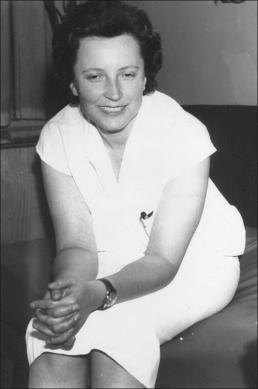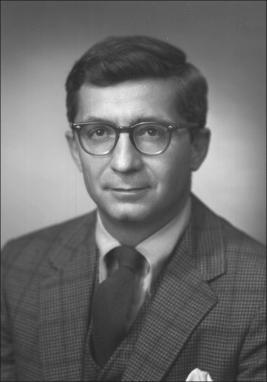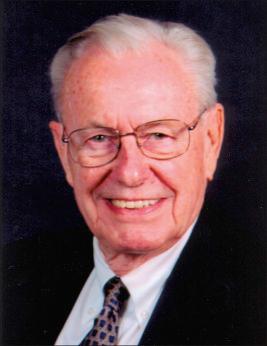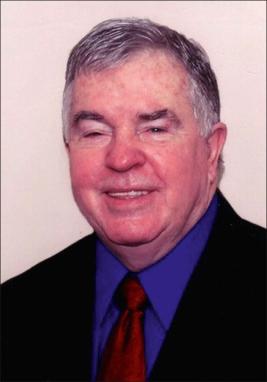Physical Address
304 North Cardinal St.
Dorchester Center, MA 02124
The recognition of burns and their treatment is evident in cave paintings that are more than 3500 years old. Documentation in the Egyptian Smith papyrus of 1500 bc advocated the use of a salve of resin and honey for treating burns. In 600 bc , the Chinese used tinctures and extracts from tea leaves. Nearly 200 years later, Hippocrates described the use of rendered pig fat and resin-impregnated bulky dressings, which was alternated with warm vinegar soaks augmented with tanning solutions made from oak bark. Celsus, in the 1st century ad , mentioned the use of wine and myrrh as a lotion for burns, most probably for their bacteriostatic properties. Vinegar and exposure of the open wound to air was used by Galen (130–210 ad ) as a means of treating burns, while the Arabian physician Rhases recommended cold water for alleviating the pain associated with burns. Ambroise Paré (1510–1590 ad ), who effectively treated burns with onions, was probably the first to describe a procedure for early burn wound excision. In 1607, Guilhelmus Fabricius Hildanus, a German surgeon, published De Combustionibus , in which he discussed the pathophysiology of burns and made unique contributions to the treatment of contractures. In 1797, Edward Kentish published an essay describing pressure dressings as a means to relieve burn pain and blisters. Around this same time, Marjolin identified squamous cell carcinomas that developed in chronic open burn wounds. In the early 19th century, Guillaume Dupuytren ( Fig. 1.1 ) reviewed the care of 50 burn patients treated with occlusive dressings and developed a classification of burn depth that remains in use today. He was perhaps the first to recognize gastric and duodenal ulceration as a complication of severe burns, a problem that was discussed in more detail by Curling of London in 1842. In 1843, the first hospital for the treatment of large burns used a cottage on the grounds of the Edinburgh Royal Infirmary.
Truman G. Blocker Jr. ( Fig. 1.2 ) may have been the first to demonstrate the value of the multidisciplinary team approach to disaster burns when, on April 16, 1947, two freighters loaded with ammonium nitrate fertilizer exploded at a dock in Texas City, killing 560 people and injuring more than 3000. At that time, Blocker mobilized the University of Texas Medical Branch in Galveston, Texas, to treat the arriving truckloads of casualties. This “Texas City Disaster” is still known as the deadliest industrial accident in American history. Over the next 9 years, Truman and Virginia Blocker followed more than 800 of these burn patients and published a number of papers and government reports on their findings. The Blockers became renowned for their work in advancing burn care, with both receiving the Harvey Allen Distinguished Service Award from the American Burn Association (ABA). Truman Blocker Jr. was also recognized for his pioneering research in treating burns “by cleansing, exposing the burn wounds to air, and feeding them as much as they could tolerate.” In 1962, his dedication to treating burned children convinced the Shriners of North America to build their first Burn Institute for Children in Galveston, Texas.
Between 1942 and 1952, shock, sepsis, and multiorgan failure caused a 50% mortality rate in children with burns covering 50% of their total body surface area (TBSA). Recently burn care in children has improved survival such that a burn covering more than 95% TBSA can be survived in more than 50% of cases. In the 1970s, Andrew M. Munster ( Fig. 1.3 ) became interested in measuring quality of life after excisional surgery and other improvements led to a dramatic decrease in mortality. First published in 1982, his Burn Specific Health Scale became the foundation for most modern studies in burns outcome. The scale has since been updated and extended to children.
Further improvements in burn care presented in this brief historical review include excision and coverage of the burn wound, control of infection, fluid resuscitation, nutritional support, treatment of major inhalation injuries, and support of the hypermetabolic response.
In the early 1940s, it was recognized that one of the most effective therapies for reducing mortality from a major thermal injury was the removal of burn eschar and immediate wound closure. This approach had previously not been practical in large burns owing to the associated high rate of infection and blood loss. Between 1954 and 1959, Douglas Jackson and colleagues at the Birmingham Accident Hospital advanced this technique in a series of pilot and controlled trials starting with immediate fascial excision and grafting of small burn areas and eventually covering up to 65% of the TBSA with autograft and homograft skin. In this breakthrough publication, Jackson concluded that “with adequate safeguards, excision and grafting of 20% to 30% body surface area can be carried out on the day of injury without increased risk to the patient.” This technique, however, was far from being accepted by the majority of burn surgeons, and delayed serial excision remained the prevalent approach to large burns. It was Zora Janzekovic ( Fig. 1.4 ), working alone in Yugoslavia in the 1960s, who developed the concept of removing deep second-degree burns by tangential excision with a simple uncalibrated knife. She treated 2615 patients with deep second-degree burns by tangential excision of eschar between the third and fifth days after burn and covered the excised wound with skin autograft. Using this technique, burned patients were able to return to work within 2 weeks or so from the time of injury. For her achievements, in 1974, she received the ABA Everett Idris Evans Memorial Medal and, in 2011, the ABA lifetime achievement award.

In the early 1970s, William Monafo ( Fig. 1.5 ) was one of the first Americans to advocate the use of tangential excision and grafting of larger burns. John Burke ( Fig. 1.6 ), while at Massachusetts General Hospital in Boston, reported unprecedented survival in children with burns of more than 80% TBSA. His use of a combination of tangential excision for the smaller burns (Janzekovic's technique) and excision to the level of fascia for the larger burns resulted in a decrease in both hospital time and mortality. Lauren Engrav et al., in a randomized prospective study, compared tangential excision to nonoperative treatment of burns. This study showed that, compared to nonoperative treatment, early excision and grafting of deep second-degree burns reduced hospitalization time and hypertrophic scarring. In 1988, Ron G. Tompkins et al., in a statistical review of the Boston Shriners Hospital patient population from 1968 to 1986, reported a dramatic decrease in mortality in severely burned children that he attributed mainly to the advent of early excision and grafting of massive burns in use since the 1970s. In a randomized prospective trial of 85 patients with third-degree burns covering 30% or more of their TBSA, Herndon et al. reported a decrease in mortality in those treated with early excision of the entire wound compared to conservative treatment. Other studies have reported that prompt excision of the burn eschar improves long-term outcome and cosmesis, thereby reducing the amount of reconstructive procedures required.


Progress in skin grafting techniques has paralleled the developments in wound excision. In 1869, J. P. Reverdin, a Swiss medical student, successfully reproduced skin grafts. In the 1870s, George David Pollock popularized the method in England. The method gained widespread attention throughout Europe, but because the results were extremely variable it quickly fell into disrepute. J. S. Davis resurrected this technique in 1914 and reported the use of “small deep skin grafts,” which were later known as “pinch grafts.” Split-thickness skin grafts became more popular during the 1930s, due in part to improved and reliable instrumentation. The “Humby knife,” developed in 1936, was the first reliable dermatome, but its use was cumbersome. E. C. Padgett developed an adjustable dermatome that had cosmetic advantages and allowed the procurement of a consistent split-thickness skin graft. Padgett also developed a system for categorizing skin grafts into four types based on thickness. In1964 J. C. Tanner Jr. and colleagues revolutionized wound grafting with the development of the meshed skin graft; however for prompt excision and immediate wound closure to be practical in burns covering more than 50% of the TBSA, alternative materials and approaches to wound closure were necessary. To meet these demands, a system of cryopreservation and long-term storage of human skin for periods extending up to several months was developed. Although controversy surrounds the degree of viability of the cells within the preserved skin, this method has allowed greater flexibility in the clinical use of autologous skin and allogenic skin harvested from cadavers. J. Wesley Alexander ( Fig. 1.7 ) developed a simple method for widely expanding autograft skin and then covering it with cadaver skin. This so-called “sandwich technique” has been the mainstay of treatment of massively burned individuals.

In 1981, John Burke and Ioannis Yannas developed an artificial skin that consists of a silastic epidermis and a porous collagen–chondroitin dermis and is marketed today as Integra. Burke was also the first to use this artificial skin on very large burns that covered more than 80% of the TBSA. David Heimbach led one of the early multicenter randomized clinical trials using Integra. Its use in the coverage of extensive burns has remained limited partly due to the persistently high cost of the material and the need for a two-stage approach. Integra has since become popular for smaller immediate burn coverage and burn reconstruction. In 1989, J. F. Hansbrough and S. T. Boyce first reported the use of cultured autologous keratinocytes and fibroblasts on top of a collagen membrane (composite skin graft; CSS). A larger trial by Boyce revealed that the use of CSS in extensive burns reduces the requirement for harvesting of donor skin compared to conventional skin autografts and that the quality of grafted skin did not differ between CSS and skin autograft after 1 year. The search for an engineered skin substitute to replace all of the functions of intact human skin is ongoing; composite cultured skin analogs, perhaps combined with mesenchymal stem cells, may offer the best opportunity for better outcomes.
Infection control is an important major advancement in burn care that has reduced mortality. One of the first topical antimicrobials, sodium hypochlorite (NaClO), discovered in the 18th century, was widely used as a disinfectant throughout the 19th century, but its use was frequently associated with irritation and topical reactions. In 1915, Henry D. Dakin standardized hypochlorite solutions and described the concentration of 0.5% NaClO as most effective. His discovery came at a time when scores of severely wounded soldiers were dying of wound infections on the battlefields of World War I. With the help of a Rockefeller Institute grant, Dakin teamed up with the then already famous French surgeon and Nobel Prize winner Alexis Carrel to create a system of mechanical cleansing, surgical débridement, and topical application of hypochlorite solution, which was meticulously protocolized and used successfully in wounds and burns. Subsequently concentrations of sodium hypochlorite were investigated for antibacterial activity and tissue toxicity in vitro and in vivo, and it was found that a concentration of 0.025% NaClO was most efficacious because it had sufficient bactericidal properties but fewer detrimental effects on wound healing.
Mafenide acetate (Sulfamylon), a drug used by the Germans for treatment of open wounds in World War II, was adapted for treating burns at the Institute of Surgical Research in San Antonio, Texas, by microbiologist Robert Lindberg and surgeon John Moncrief. This antibiotic would penetrate third-degree eschar and was extremely effective against a wide spectrum of pathogens. Simultaneously, in New York, Charles Fox developed silver sulfadiazine cream (Silvadene), which was almost as efficacious as mafenide acetate. Although mafenide acetate penetrates the burn eschar quickly, it is a carbonic anhydrase inhibitor that can cause systemic acidosis and compensatory hyperventilation and may lead to pulmonary edema. Because of its success in controlling infection in burns combined with minimal side effects, silver sulfadiazine has become the mainstay of topical antimicrobial therapy.
Carl Moyer and William Monafo initially used 0.5% silver nitrate soaks as a potent topical antibacterial agent for burns, a treatment that was described in their landmark publication and remains the treatment of choice in many burn centers today. With the introduction of efficacious silver-containing topical antimicrobials, burn wound sepsis rapidly decreased. Early excision and coverage further reduced the morbidity and mortality from burn wound sepsis. Nystatin in combination with silver sulfadiazine has been used to control Candida at Shriners Burns Hospital for Children in Galveston, Texas. Mafenide acetate, however, remains useful in treating invasive wound infections.
Become a Clinical Tree membership for Full access and enjoy Unlimited articles
If you are a member. Log in here